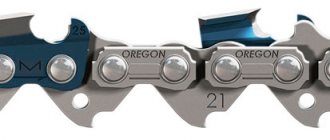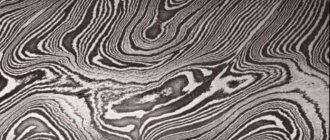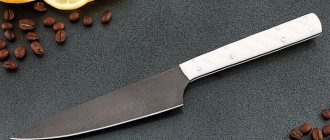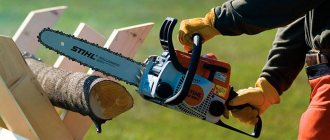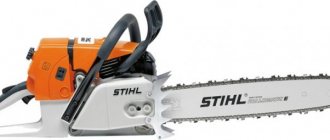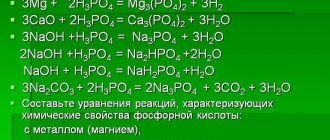What are solvents? By definition, these are volatile compounds of organic and inorganic origin that can liquefy or dissolve other materials. Such substances are also used to impart the necessary consistency and improve the properties of paints and varnishes.
Solvents can be produced on a single-component or composite basis; they can be solid, liquid and even gaseous. Liquid compositions are widely used in construction and for domestic needs. In particular, solvent 646, which we will look at in more detail.
What it is? Compound
Solvent 646 is a chemically active component used in almost any type of finishing work. The composition is designed to work with nitro-based enamels and varnishes, epoxy and glyphthalic primers. After the volatile components evaporate, the coating acquires a glossy tint.
The solvent is usually clear, but may have a yellowish tint. The mixture is multicomponent, with a sharp, characteristic odor.
The composition includes the following substances:
- 7% - acetone.
- 8% - ethyl cellosolve.
- 10% - butyl acetate.
- 10% - ethyl alcohol.
- 15% - butanol.
- 50% - toluene.
This chemical is produced in strict accordance with the requirements of GOST number 18188-72 . Currently, manufacturers are working to reduce the total concentration of acetone and toluene. This is due to the fact that these substances are often used in the manufacture of narcotic drugs.
White spirit composition
There is no single exact formula for this solvent. The basis for its production is a mixture of aliphatic and aromatic hydrocarbon compounds.
For many manufacturers, the percentage corresponds to:
- 16% - aromatic substances;
- 0.025% - mass fraction of sulfur matter.
Important! Regardless of the proportions of components used and the raw material processing technology, the finished white spirit solvent must meet the technical characteristics in accordance with the requirements of GOST 3134-78.
Advantages and disadvantages
The positive characteristics of solvent 646 can be expressed as follows:
- Availability. The product is sold in any hardware store and attracts attention at an affordable price.
- Practicality. The operating instructions are indicated on the product packaging, so anyone can easily understand the features of the application.
- Functionality. Thanks to its multicomponent composition, the solvent can interact with almost any material.
In addition, adding the product speeds up the drying of the coating and promotes the formation of a smooth, glossy surface.
The material also has significant disadvantages. In particular:
- Increased level of toxicity.
- Fire hazard.
- Strong smell.
- Special storage conditions.
Therefore, when working with a chemical solution, safety precautions must be observed.
Purpose and use of metal degreaser
Any metal product requires preliminary cleaning of the surface from various types of contaminants, including grease. There are the following degreasing methods:
- mechanical - used when it is necessary to provide a rough surface for painting. The process is quite labor-intensive, requiring the use of various grinding brushes or wheels;
- electrochemical – effectively cleans metal products from fatty films, regardless of the thickness of the contamination. However, this cleaning method is acceptable only on a production scale, where there are specially equipped premises. If the cleaning technology is violated and the degreaser is overdosed, the product may be damaged, since the strength of the metal may be impaired;
- chemical is the most optimal method of degreasing. The process can be performed in production as well as at home.
It is also worth noting that it is best to use a chemical method of cleaning the metal surface from fats immediately before painting in well-ventilated areas, since the specific smell of anti-corrosion agents and degreasers is very toxic, which in itself is harmful to human health. It would not be superfluous for the employee to use special protective devices that will prevent possible poisoning by chemical vapors.
Scope of application
Solvent 646 has a wide range of applications. In everyday life, the composition is used to remove oil and paint from hands. It is curious that the product cleans well even coloring pigments used in the textile industry. In addition, the composition is often used to clean tools after painting work.
They are also used to bring organic and chemical surfaces to the desired consistency, and are used in the production of paints and varnishes. In general, the products are equally suitable for the oil refining industry, mechanical engineering, finishing work and the needs of car repair shops.
In addition, the mixture based on petroleum products has found its application in the perfumery and cosmetics industry.
General characteristics of solvents.
Solvents are manufactured both on the basis of one component and using several components. It may contain liquid, solid and gaseous substances, but in most cases, solvents are produced in liquid form.
Solvents are generally rated based on the following characteristics: water percentage, appearance, volatility, and density. The manufacturing technology and quality of the compositions are determined by some special characteristics, such as: toxicity, acidity, the presence of chemical additives, flammability and other indicators.
Solvents are used in instrument and mechanical engineering, in many branches of the chemical industry, in leather goods and footwear production, in laboratories and the medical industry.
Types of solvents.
Each type of work requires the use of a specific type of solvent composition:
- For glyphthalic and bitumen varnishes and paints, turpentine, xylene, and solvent are used.
- For oil paints - white spirit, turpentine, gasoline.
- For perchlorovinyl paints and varnishes – acetone.
- For water-based and adhesive paints, multicomponent solvents can be used.
What is the difference between solvents 646 and 647?
Solvents are presented in stores in a fairly diverse assortment, but the most popular are numbers 646 and 647. At first glance, the compositions seem identical: they are produced by domestic enterprises, packaged in similar containers, and used in the same areas. However, there are minor but very important differences between the products.
A distinctive feature is the chemical composition of the solvents. We cited the components that make up 646 above, so we’ll talk about 647. This is also a multicomponent mixture, which includes the following substances:
- Ethyl acetate.
- Butanol
- Toulol.
- Butyl acetate.
As you probably noticed, the list of active ingredients does not include acetone. Thanks to this feature, solvent 647 is less active, so it can be used on surfaces that require careful care. The difference in chemical composition also affected the area of application. In particular, 647 is intended to increase the viscosity of nitrocellulose compounds.
Why is degreasing necessary?
Degreasing is a standard procedure that is carried out before finishing metal surfaces.
Metal degreasing allows you to solve the following problems:
- remove the layer of dirt and dust that accumulates on the surface;
- remove grease and oil stains;
- increase the adhesion strength of the finishing material to the metal;
- increase the service life of the finish.
Specifications 646
| Relative density | 0.87 g/cm3 |
| Boiling temperature | 59°С |
| Flash point | 6°С |
| Auto-ignition temperature | 428°C |
| Mass fraction of water (according to Fischer), no more | 2% |
| Ethyl ether volatility | 8-15 |
| Acid number, no more | 0.06 mg KOH/g |
| Coagulation number, not less | 35% |
Pros and cons of White-spirit
If we take our domestic white-spirit and its foreign analogue for comparison, we can conclude that the imported one may not have a specific odor, but ours greatly benefits in the effectiveness of its direct task, since it is better able to clean surfaces from greasy components.
Therefore, we advise you to buy domestically produced white-spirit solvents, because it’s all about proportions. In imported white-spirit solvents, the mass fraction of aromatic hydrocarbons is significantly lower than in domestic ones, and therefore they are inferior in dissolving ability. Solvent power is much more important than unpleasant odor. To do this, just stock up on a respirator and skin protection and you will no longer be afraid of dangerous chemical factors.
The main advantages of using white-spirit for degreasing and diluting are:
- low chemical hazard coefficient compared to other similar solvents;
- rapid weathering;
- adequate cost;
- Wide range of uses for cleaning and degreasing.
Can the mixture be used for degreasing?
This is a very relevant question. If the surface is not degreased before painting or priming, adhesion is reduced and the coating will peel off in areas of remaining stains. The problem is different: how suitable solvent 646 is for preparatory work.
Let's start with the fact that degreasing surfaces is included in the scope of application of any thinning compositions. However, our solvent is the most aggressive among analogues. Therefore, when using a degreasing agent, you need to be careful.
Active components can damage the base and dissolve the paintwork. In addition, acetone is aggressive to plastic, so such surfaces cannot be degreased with solvent 646.
Substance consumption
If we talk about consumption per 1 m2 during degreasing, it is recommended to adhere to the following standards:
- External surfaces – 0.147 kg.
- Internal surfaces made of wood and metal – 120 kg.
- Concrete surfaces – 0.138 kg.
If the degreased surface is exposed to moisture and other aggressive environments, the consumption rate will be 0.169 kg.
What are the consumption rates for 1 sq.m2
When you want to use it, you need to know exactly what varnishes and paints it can be used with, and how much you need to add.
It is important to understand that the consumption when degreasing surfaces, as well as diluting varnishes and paints, differs significantly. Moreover, the solvent consumption will not be the same when diluting different types of varnishes and paints. To determine the optimal consumption per m2, you need to take into account the technical conditions, as well as the standards of paints and varnishes. Experimental studies are being carried out. The general degree of dilution of paintwork materials determines the solvent consumption rates for a particular substance.
In order to properly dilute nitrocellulose putty NTs-00-7, according to state standards, you will need to use 1.23 kg/t of solvent. To dilute nitroglyphthalic enamels NTs-132 and NTs-1200, you will need 1.17 and 0.85 kg/t, respectively.
Since solvent 646 is one of the most effective when compared with other multicomponent substances, it is in high demand in the construction of special-purpose facilities, as well as in the repair and maintenance of complex equipment.
Precautionary measures
It is important to understand that the subject of our conversation belongs to the third class of chemical hazard. Therefore, when working with the composition, precautions must be taken. In particular, you will need safety glasses and gloves, and a respirator. In addition, work is carried out only in rooms with good ventilation.
If the chemical liquid gets on open areas of the body, the skin is immediately washed with warm water and soap. In case of contact with eyes or other mucous membranes, you should immediately consult a doctor.
In addition, the solvent belongs to the category of flammable and flammable substances. Therefore, there should be no open sources of fire or uninsulated electrical wiring in the premises. Smoking is strictly prohibited.
Tips and recommendations for use
Degreasers should be used with extreme caution, avoiding contact of the liquid with the skin. All work is carried out in the given sequence:
- The metal is cleaned before processing mainly mechanically. This must be done to eliminate various defects and rust. You can use regular sandpaper, as well as a grinder;
- areas that do not need to be treated are covered with special cloths;
- It is best to apply the degreaser to the processed fragment with a piece of cloth;
- the solvent is kept on the surface for a certain period of time, after which the excess is removed, and the metal area is primed and then painted.
Attention: If dirt cannot be removed with a rag, then small items should be placed in a container filled with solvent.
It is imperative to use a degreaser before painting. One should not make the mistake of many who decide to save time by skipping this important stage of metal processing. Rust that appears on the surface over time will force the owner to incur significant time and financial costs again.
Storage Features
The mixture of volatile organic substances is stored in the original packaging or hermetically sealed container, away from open sources of fire. Outdoor storage is not allowed to avoid contact of active components with a humid environment or direct sunlight.
The temperature range of storage conditions can vary within -40/+40 degrees .
The shelf life stated by the manufacturer is 12 months from the date of manufacture of the product. Provided that storage recommendations are followed.
Safety rules for use
Despite the not very high toxicity threshold compared to other materials in the solvent group, white spirit requires caution from the user and careful adherence to safety rules:
- Always work with solvent in protective clothing - gloves and a respirator, as vapors can cause intoxication, poisoning of the body, skin allergies, and even drug addiction with frequent prolonged use.
- Well ventilate the room in which work was carried out using white spirit.
- During storage, limit exposure of containers to direct sunlight - ignoring this rule can lead to the accumulation of electrostatic charge and fire.
- It is strictly unacceptable to work with this solvent near an open fire, and artificial lighting must comply with explosion safety standards.
- To open containers, it is unacceptable to use tools that can produce a spark upon impact.
- White spirit cannot be pumped or drained using compressed air equipment.
- If the solvent catches fire, extinguish it with all special means, but do not use water to extinguish the fire.
Manufacturers
To purchase quality products, you need to take a responsible approach to choosing a manufacturer. If we talk about companies specializing in the production of solvent 646, we recommend paying attention to the products of such enterprises:
- Dmitrievsky chemical plant . This is one of the oldest and dynamically developing companies that produces products for the food, paint and varnish, leather and rubber industries. The company's products are widely known not only in Russia, but also in 70 countries around the world .
- Verkhnevolzhskaya paint and varnish company . One of the largest suppliers of paints and varnishes to countries near and far abroad. The product range includes primers, paints, enamels and solvents.
- "POLICOM" . It is a leading manufacturer of industrial and household chemicals. The production line is fully automated, the products meet international requirements.
All companies pay increased attention to product quality and work in accordance with GOST .
Application technology
The purchased solvent is already ready for use. The technology for its use is very simple:
- Add a small amount of solvent to the desired material.
- Mix thoroughly until smooth.
- Repeat as necessary until the desired consistency of the main consumable is obtained.
Simple degreasing products
Many innovative tools are available to carry out preparatory work before painting the metal surface. However, you should not ignore simple but effective “old-fashioned” options. Scroll:
- White Spirit. Pros: versatile, simple, affordable, dries quickly. Cleanses from fatty, oily particles, organic compounds. Cons: toxic, has a strong odor, flammable, difficult to remove complex stains, leaves a film on the surface.
- Solvent 646. Advantages: multi-component composition, affordable price, effective when working with old paint, putty, varnish, used for washing painting tools. Forms a protective film that blocks the access of moisture, preventing the development of the corrosion process. Disadvantages: explosive, toxic substance, enters into a chemical reaction with some metals, damaging the base. All manipulations are carried out in special protection in a well-ventilated area.
- Acetone multifunctional agent:
- degreases metal, removes grease and resin;
- dilutes dyes, varnishes, enamels, primers;
- is part of solvents.
Negative properties: toxicity, high volatility, pungent odor.
- Another cleaning method is to degrease with kerosene. Use with caution as it leaves a film that reduces the adhesion of the metal surface. Take only clean liquid; high-octane gasoline has similar properties.
- Ethyl and isopropyl alcohol are suitable for small areas. Disadvantage: they are absorbed into the coating being cleaned.
- Soap solution. An excellent method for processing fragile parts. Not suitable for difficult stains.
